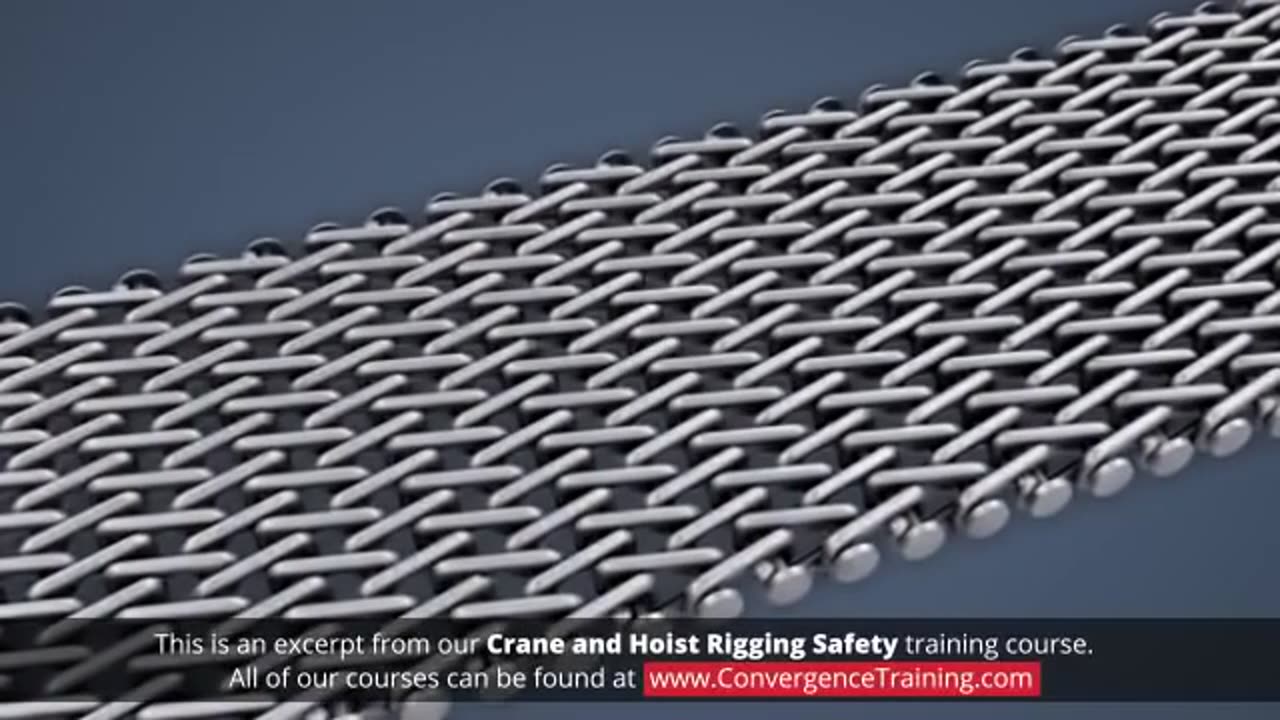Premium Only Content

Crane and Hoist Rigging Safety for Canada
**Crane and Hoist Rigging Safety** in Canada is essential to prevent accidents involving lifting equipment and ensure compliance with federal and provincial occupational health and safety regulations. Below is a comprehensive overview of crane and hoist rigging safety practices in Canada:
---
### **Key Regulations and Standards**
In Canada, crane and hoist safety is regulated by:
1. **Provincial/Territorial Occupational Health and Safety (OHS) Regulations**:
- Each province and territory has specific regulations governing cranes, hoists, and rigging.
- These regulations cover operator training, equipment inspection, and safe operating procedures.
2. **Canadian Standards Association (CSA)**:
- **CSA B167: Overhead Traveling Cranes, Gantry Cranes, Monorails, Hoists, and Trolleys**:
- Provides standards for design, operation, maintenance, and inspection of cranes and hoists.
- **CSA Z150: Safety Code on Mobile Cranes**:
- Governs the use of mobile cranes, including design, operation, and maintenance requirements.
3. **Federal Regulations** (for federally regulated workplaces):
- **Canada Labour Code, Part II**:
- Addresses the general duty of employers to ensure worker safety.
- **Canadian Occupational Health and Safety Regulations (COHSR)**:
- Include specific requirements for cranes and hoists used in federally regulated industries.
---
### **Employer Responsibilities**
Employers must:
1. **Conduct Risk Assessments**:
- Identify hazards associated with crane and hoist operations, including ground stability, weather conditions, and load characteristics.
2. **Ensure Proper Equipment Use**:
- Select cranes and rigging equipment suitable for the task, ensuring load limits are not exceeded.
3. **Provide Training and Certification**:
- Operators, riggers, and signal persons must be trained and competent in safe practices, as per provincial and CSA requirements.
- Many provinces require crane operators to hold valid certification (e.g., through the Alberta Apprenticeship and Industry Training Program or Ontario College of Trades).
4. **Maintain Equipment**:
- Develop a preventive maintenance program to keep cranes, hoists, and rigging equipment in safe working condition.
5. **Conduct Inspections**:
- Perform pre-use, periodic, and annual inspections in accordance with CSA standards and manufacturer recommendations.
6. **Develop Safe Work Procedures**:
- Establish written procedures for rigging and crane operations, including emergency response plans.
---
### **Worker Responsibilities**
Workers operating or assisting with cranes and hoists must:
1. **Follow Training**:
- Operate cranes and rigging equipment as per their training and employer guidelines.
2. **Inspect Equipment**:
- Perform pre-use inspections and report defects or damage immediately.
3. **Use Personal Protective Equipment (PPE)**:
- Wear appropriate PPE, such as hard hats, gloves, and safety footwear.
4. **Communicate Effectively**:
- Use standard hand signals or radios for clear communication during lifting operations.
---
### **Safe Rigging Practices**
#### **1. Choosing the Right Rigging Equipment**
- Use equipment rated for the load, including:
- **Slings**: Wire rope, chain, synthetic webbing, or metal mesh.
- **Hooks, Shackles, and Eyebolts**.
- **Spreaders or Lifting Beams** (if required to balance the load).
- Ensure all rigging equipment is properly tagged and certified.
#### **2. Inspecting Rigging Equipment**
- Inspect before each use for:
- Fraying, kinks, or corrosion (for wire ropes).
- Cuts, tears, or burns (for synthetic slings).
- Deformation, cracks, or wear (for hooks, shackles, and chains).
- Remove damaged or worn equipment from service immediately.
#### **3. Securing the Load**
- Ensure the load is balanced and properly secured before lifting.
- Attach slings and rigging gear to the load's **designated lifting points**.
#### **4. Maintaining a Safe Environment**
- Keep the area under and around the load clear.
- Use taglines to guide the load and prevent uncontrolled movement.
- Ensure the load does not exceed the crane’s or rigging’s rated capacity.
---
### **Crane Operation Safety**
1. **Pre-Use Inspection**:
- Check controls, brakes, and safety systems for proper functioning.
- Verify that load charts and capacity information are visible and accurate.
2. **Setting Up the Crane**:
- Ensure the crane is positioned on stable ground or properly leveled.
- Use outriggers or mats as required for mobile cranes.
3. **During Operation**:
- Follow the crane's **load chart** to avoid exceeding lifting limits.
- Avoid sudden movements or side-loading of the crane boom.
- Monitor weather conditions; cease operations in high winds or storms.
4. **Signaling and Communication**:
- Use a trained **signal person** for clear communication between the operator and ground crew.
- Follow standardized hand signals or use reliable radio communication.
---
### **Inspection and Maintenance Requirements**
#### **Inspection Types**:
1. **Pre-Use Inspections**:
- Conducted by operators daily or before each shift.
- Look for visible damage, malfunctioning controls, or loose parts.
2. **Periodic Inspections**:
- Conducted at regular intervals (e.g., monthly) by a qualified person.
- Includes detailed checks of structural components, motors, and electrical systems.
3. **Annual Inspections**:
- Performed by certified inspectors in accordance with CSA standards and manufacturer recommendations.
#### **Maintenance**:
- Follow the crane and hoist manufacturer’s guidelines for lubrication, adjustments, and part replacements.
- Keep detailed maintenance and inspection records.
---
### **Common Hazards and Mitigation**
1. **Overloading**:
- Mitigation: Follow load charts and use properly rated equipment.
2. **Dropped Loads**:
- Mitigation: Secure loads properly and inspect rigging gear.
3. **Crane Tip-Over**:
- Mitigation: Ensure ground stability and do not exceed capacity limits.
4. **Electrical Contact**:
- Mitigation: Maintain safe distances from power lines and use spotters if necessary.
---
### **Conclusion**
Crane and hoist rigging safety in Canada requires adherence to CSA standards, provincial OHS regulations, and best practices. Employers and workers must work collaboratively to identify hazards, follow safe operating procedures, and ensure that all equipment is inspected, maintained, and used correctly. Proper training, communication, and planning are essential for preventing accidents and ensuring a safe working environment.
-
 12:42
12:42
Cooking with Gruel
19 hours agoBrown Butter Trifle with Salted Caramel and Cinnamon Apple
5.49K2 -
 2:46
2:46
BIG NEM
7 hours agoDiscovering RAKIJA: The Holy Liquer of the Balkans
4.03K2 -
 1:11:38
1:11:38
Film Threat
12 hours agoCHRISTMAS DAY CHILL STREAM WITH CHRIS GORE | Hollywood on the Rocks
127K24 -
 14:22:40
14:22:40
The Quartering
1 day agoYule Log Christmas MAGA Edition With Memes! Come Hang Out!
218K29 -
 38:41
38:41
MYLUNCHBREAK CHANNEL PAGE
1 day agoTimeline Begins in 1800? - Pt 1 & 2
98.7K50 -
 1:23:41
1:23:41
Game On!
1 day ago $2.30 earnedNetflix NFL Christmas Games Preview and Predictions!
87.6K14 -
 2:05:07
2:05:07
Darkhorse Podcast
1 day agoWhy Trump Wants Greenland: The 257th Evolutionary Lens with Bret Weinstein and Heather Heying
316K738 -
 8:50:58
8:50:58
Right Side Broadcasting Network
1 day ago🎅 LIVE: Tracking Santa on Christmas Eve 2024 NORAD Santa Tracker 🎅
415K62 -
 2:48
2:48
Steven Crowder
1 day agoCROWDER CLASSICS: What’s This? | Nightmare Before Kwanzaa (Nightmare Before Christmas Parody)
363K13 -
 33:49
33:49
Quite Frankly
1 day agoThe Christmas Eve Midnight Telethon
149K30